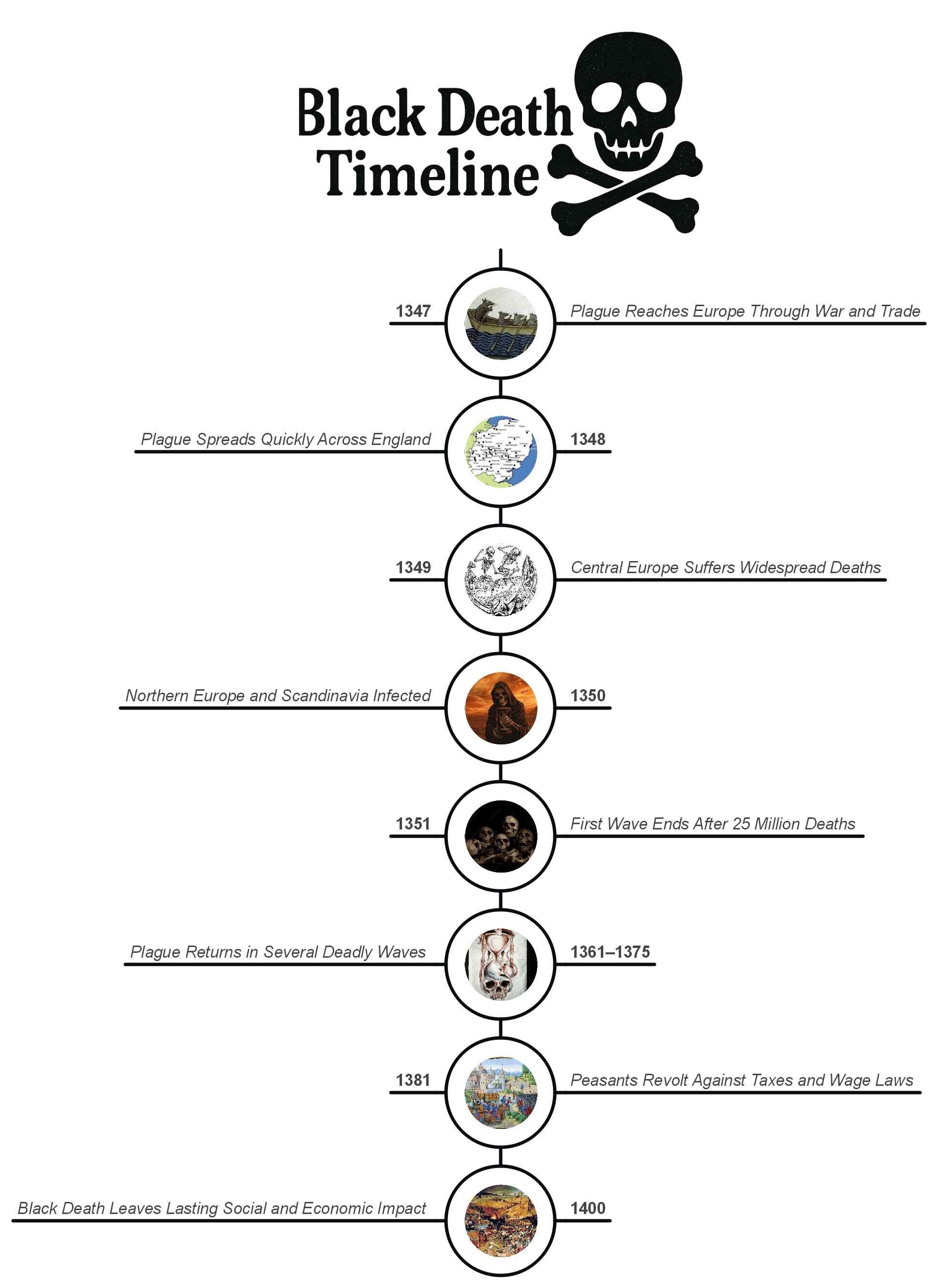The Black Death was one of the deadliest pandemics in human history. It hit Europe between 1347 and 1351, killing around 25 million people. That was nearly one-third of the population. The disease came from Central Asia and spread along busy trade routes. It reached Europe through ports like Kaffa and Sicily.
The plague was caused by a bacterium called Yersinia pestis. It spread through fleas on rats and from person to person. Cities shut down. Villages vanished. Fear and confusion gripped everyone. Life changed overnight, and Europe would never be the same.
Part 1: The Black Death Timeline
The Black Death, a fast-spreading bubonic plague, swept across Europe between 1347 and 1351. Historians estimate it killed 30% to 60% of the population during its initial outbreak. Although most deaths occurred in those years, the plague returned several times, with major resurgences in the late 14th century and again in 1665.
The Black Death also had a severe impact on Central Asia and the Middle East.
1347: Plague Reaches Europe
The Black Death begins its journey to Europe through trade and war. In Crimea, the Mongol ruler Janibeg attacks the Genoese port of Kaffa. As his soldiers die from plague, he catapults their bodies over the city walls. This act may be one of the first examples of biological warfare.
Genoese traders flee by ship, unknowingly carrying the deadly disease. When they land in Sicily and other Mediterranean ports, the plague spreads quickly inland. Europe's nightmare has begun.
1348: Spreads to England
The plague moves fast across Europe. By early 1348, it reached Italy, Spain, France, and North Africa. In August, a ship brings the disease to Dorset, England. From there, it quickly spreads to Bristol and the rest of southern England.
In Florence, a merchant named Pepo d'Antonio di Lando records family deaths in his diary. It became one of the earliest personal records of the Black Death. No place seems safe.
1349: Central Europe Falls
The disease spreads farther into Europe. Austria, Hungary, Switzerland, Germany, and the Low Countries are now affected. In England, London suffers its worst losses between February and May. Churches, homes, and streets are filled with the sick and dying.
The plague keeps moving north in England. Some towns are left nearly empty. Mass graves become common as bodies pile up faster than they can be buried.
1350: Reaches the North
By this year, the plague reached northern Europe. It spreads into Scotland, Scandinavia, and the Baltic countries. Even remote villages and islands feel its impact. The death toll continues to rise as new regions fall victim.
Survivors begin to realize life will not return to normal. Entire communities are changed. People flee cities, abandon farms, and struggle to understand what is happening around them.
1351: First Wave Ends
The first wave of the Black Death ends, but the damage is enormous. Around one-third of Europe's population; about 25 million people have died. In Paris alone, half of the city's population is gone. Cities and villages lie silent.
Across the continent, homes, farms, and shops are abandoned. Families are torn apart. Survivors live with fear, grief, and uncertainty as they begin to rebuild their lives.
1361 - 1375: Plague Returns
The plague returns again and again. New outbreaks hit in 1361-63, 1369-71, and 1374-75. Though less deadly than the first wave, these later outbreaks still kill thousands. No one feels safe, and children are especially vulnerable.
With fewer workers available, wages rise. Landowners compete to hire laborers. Society started to change. People demanded more rights, and the old social order began to break down.
1381: Peasants Revolt
After the plague, the English government tried to control the economy. They limit wages and add a new poll tax. Workers are angry. Life is harder, but the pay is not fair. Tensions rise across the country.
In June 1381, thousands of peasants revolted. They march on London demanding justice. It became the first major rebellion in English history. Though crushed, it showed that change is coming.
1400: Long Term Impact
By now, the long-term effects of the plague are clear. England's population is half what it was a century earlier. About 1,000 villages are gone - abandoned or wiped out by disease. Life has changed forever.
The labor force is smaller. Farmland goes unused. Entire communities disappear from maps. The Black Death didn't just kill - it reshaped Europe. Its shadow would last for centuries.
Part 2: How to Make the Black Death Timeline using EdrawMind?
The Black Death was one of the deadliest pandemics in human history. Creating a timeline is a powerful way to understand how it spread across Europe and what happened year by year between 1347 and 1400.
If you're new to this, EdrawMind is a great tool. Let's go through the simple steps to build your own Black Death timeline:
Step 1: Sign in & Get Started
- Open EdrawMind and sign in with your social media or Wondershare account.
- Or use the EdrawMind online directly in your browser.
- Click the Create button in the top-left, then choose Local MindMap to begin a new timeline file.
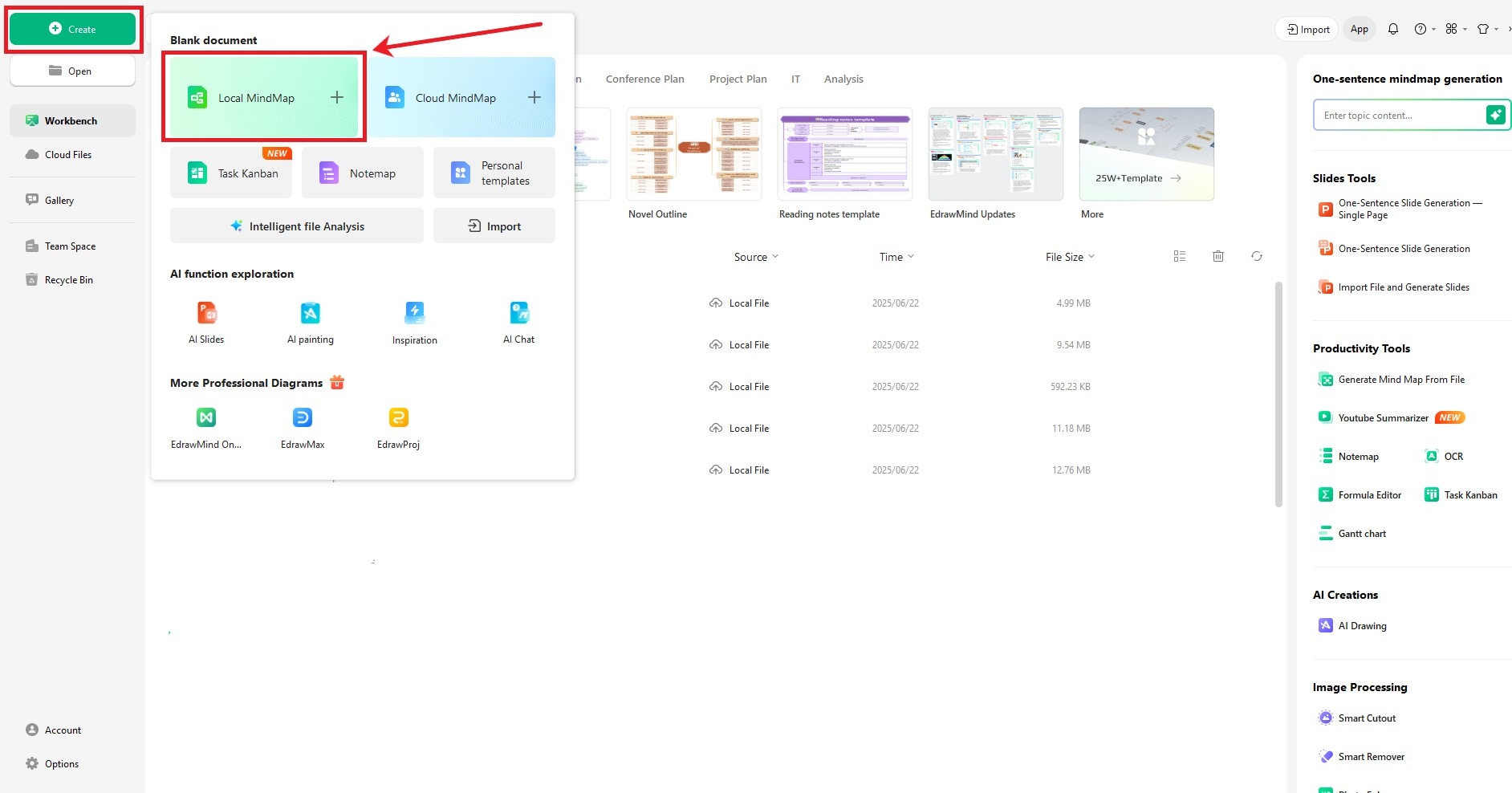
Step 2: Choose Timeline Style
- Click the Main Idea, and a floating menu will appear.
- From the floating menu, click Layout, then select Timeline (down).
- This will arrange your timeline vertically, which works best for historical events.
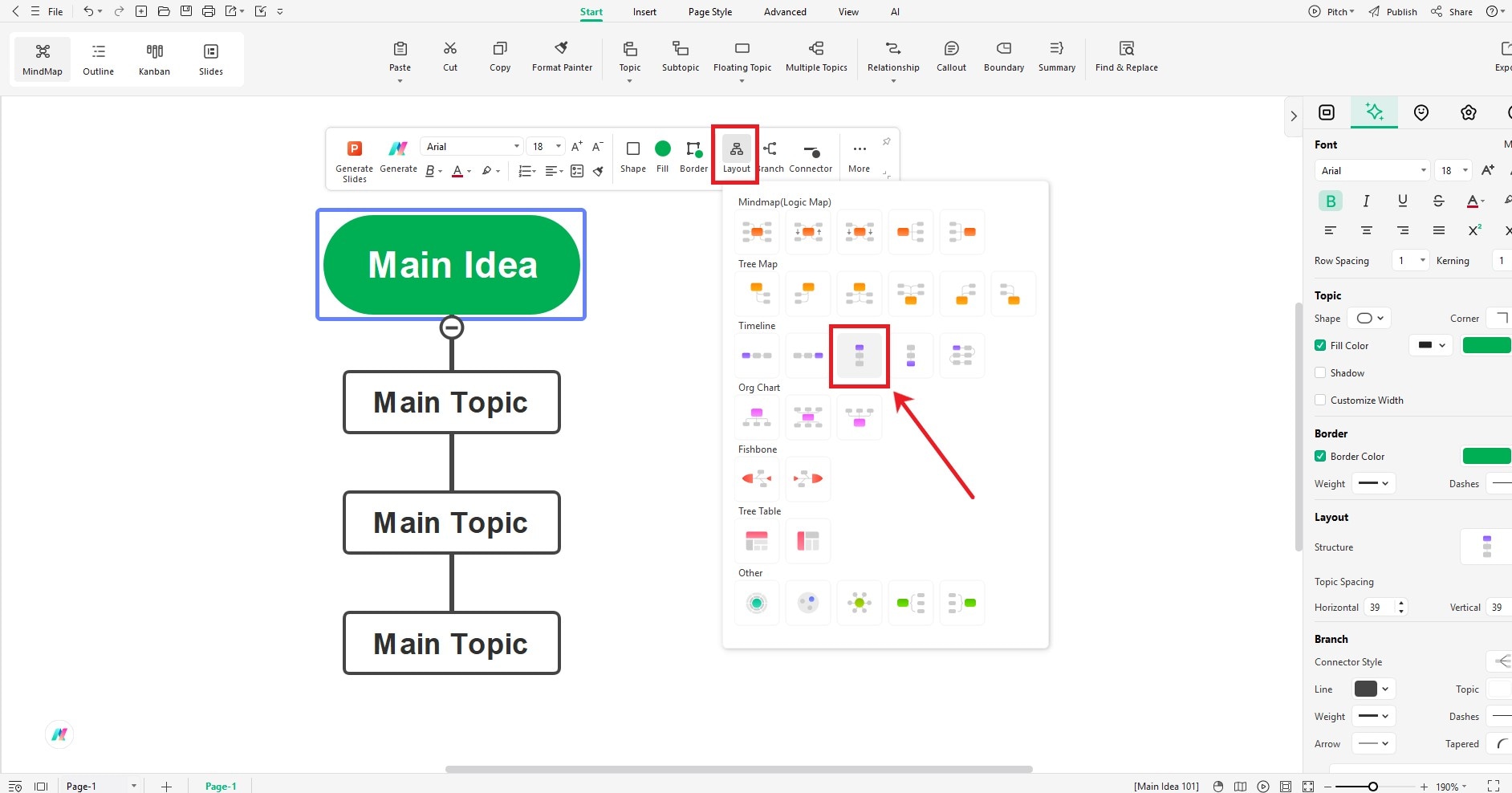
Step 3: Add Timeline Events
- Click the Main Idea, then go to More > Topic to create your first point.
- Click a Main Topic, then select Subtopic to add more details.
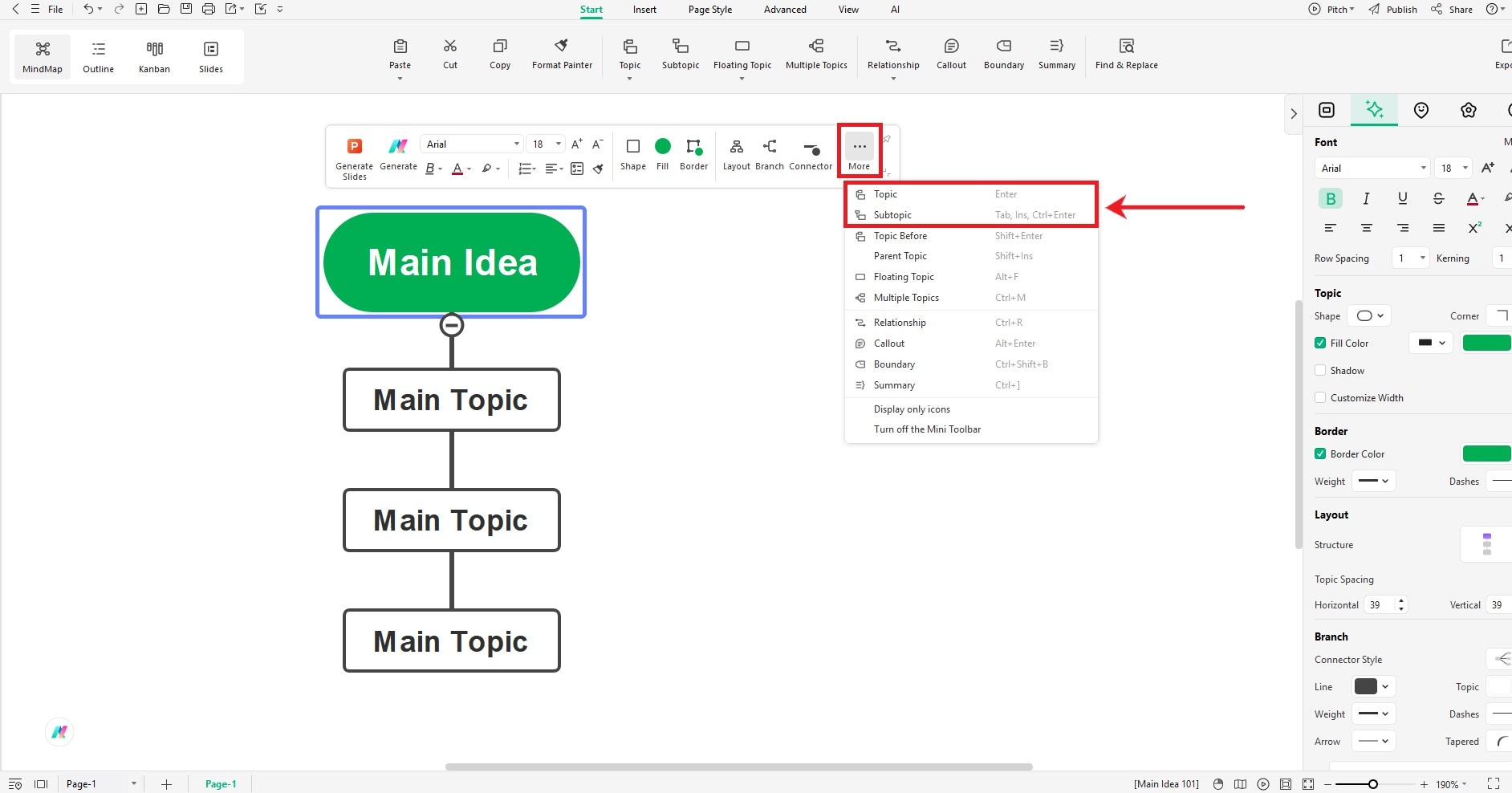
Step 4: Customize Your Timeline
- Click any part of the timeline to update it.
- Double-click a topic to enter custom text, such as "25 million dead."
- Change font, colors, and layout using the right-side toolbar.
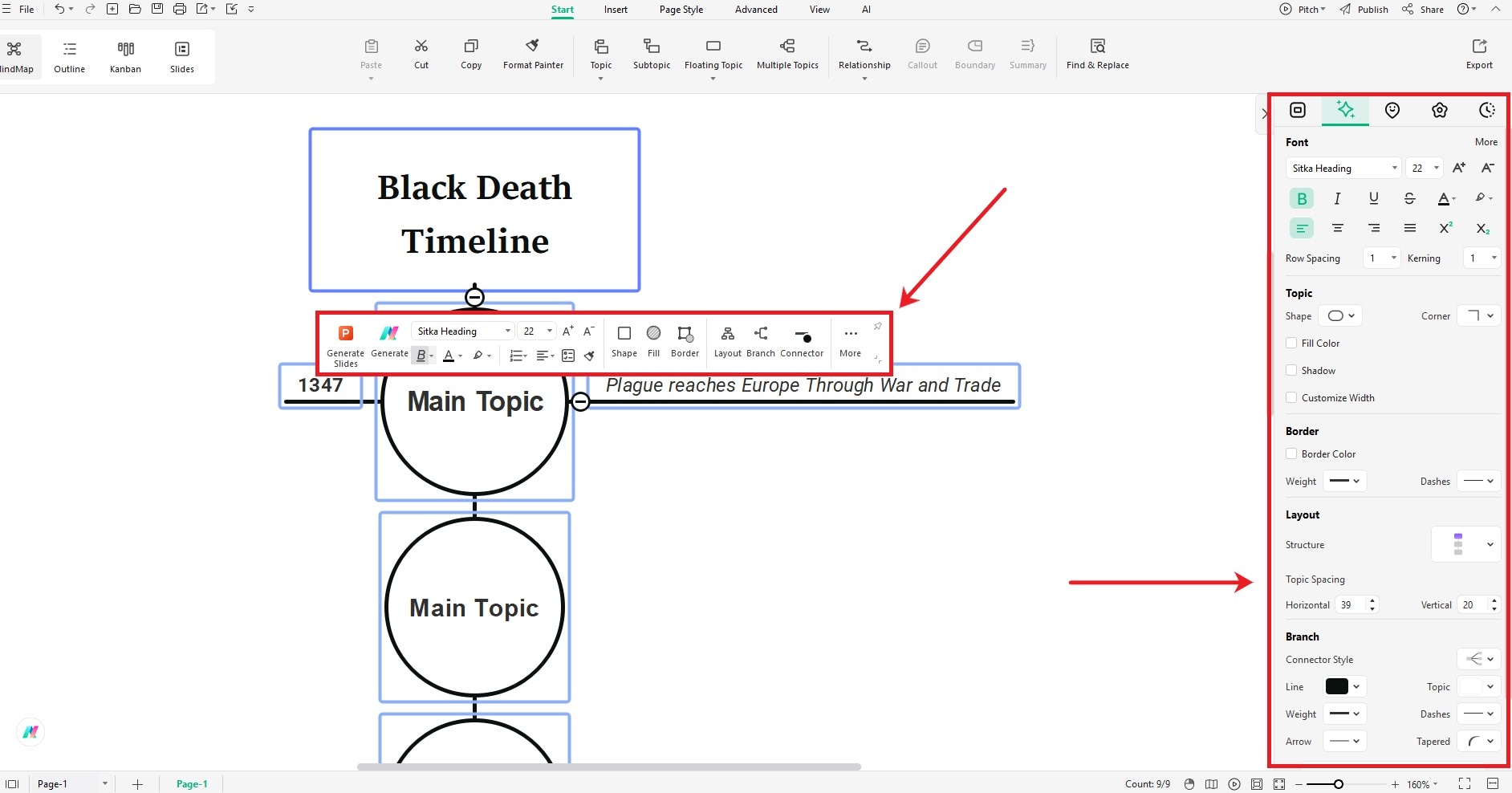
Step 5: Add Pictures to Events
- Find relevant images; maps, drawings, or plague symbols.
- Drag and drop them onto timeline points in EdrawMind.
- Use the anchor points to resize or move pictures as needed.
- Customize images from the floating menu and the right toolbar.
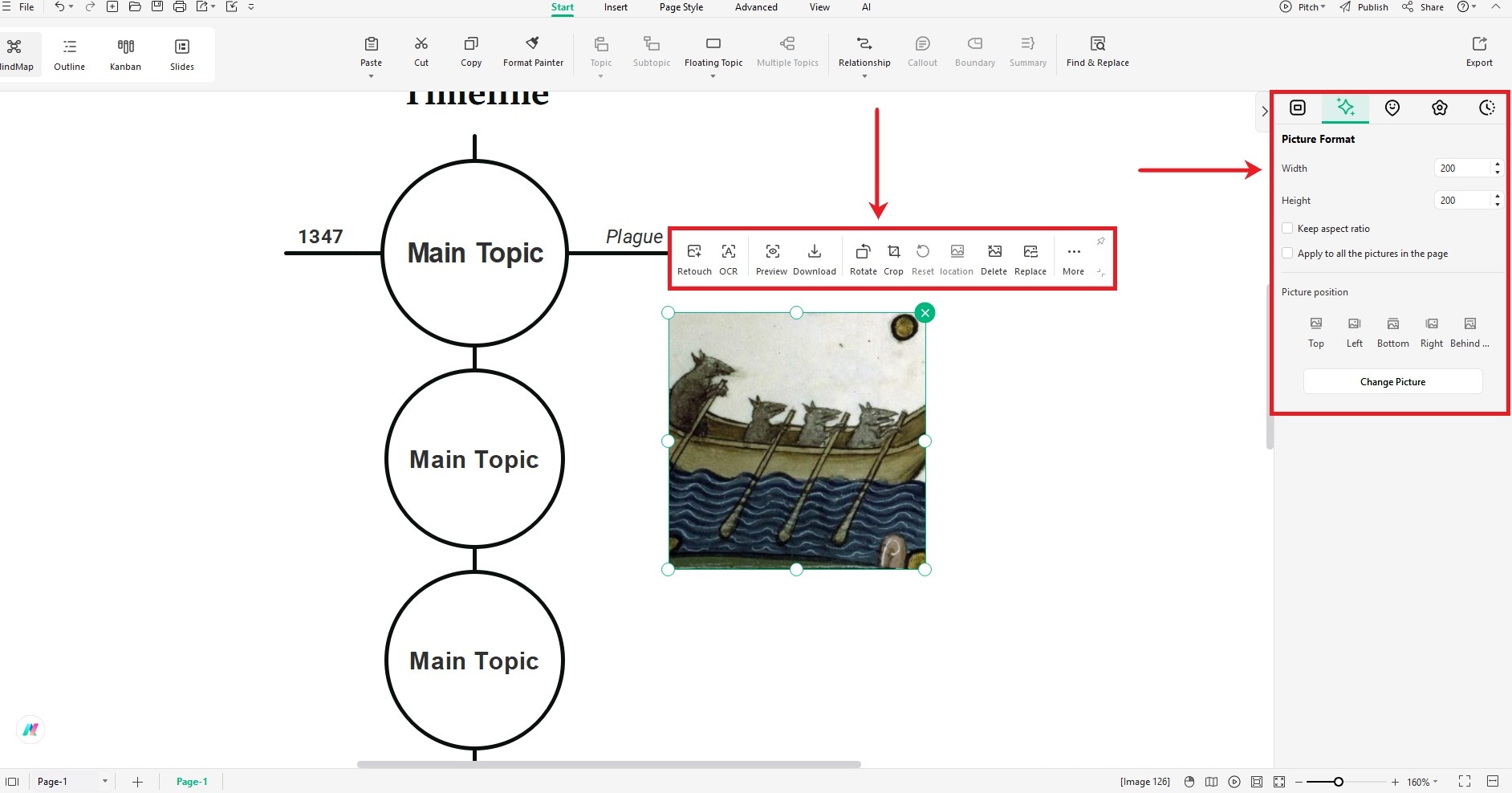
Step 6: Save or Export Your Work
- Click File > Save to save your timeline.
- Or choose Export to download it as PNG, JPG, PDF, Word file, etc.
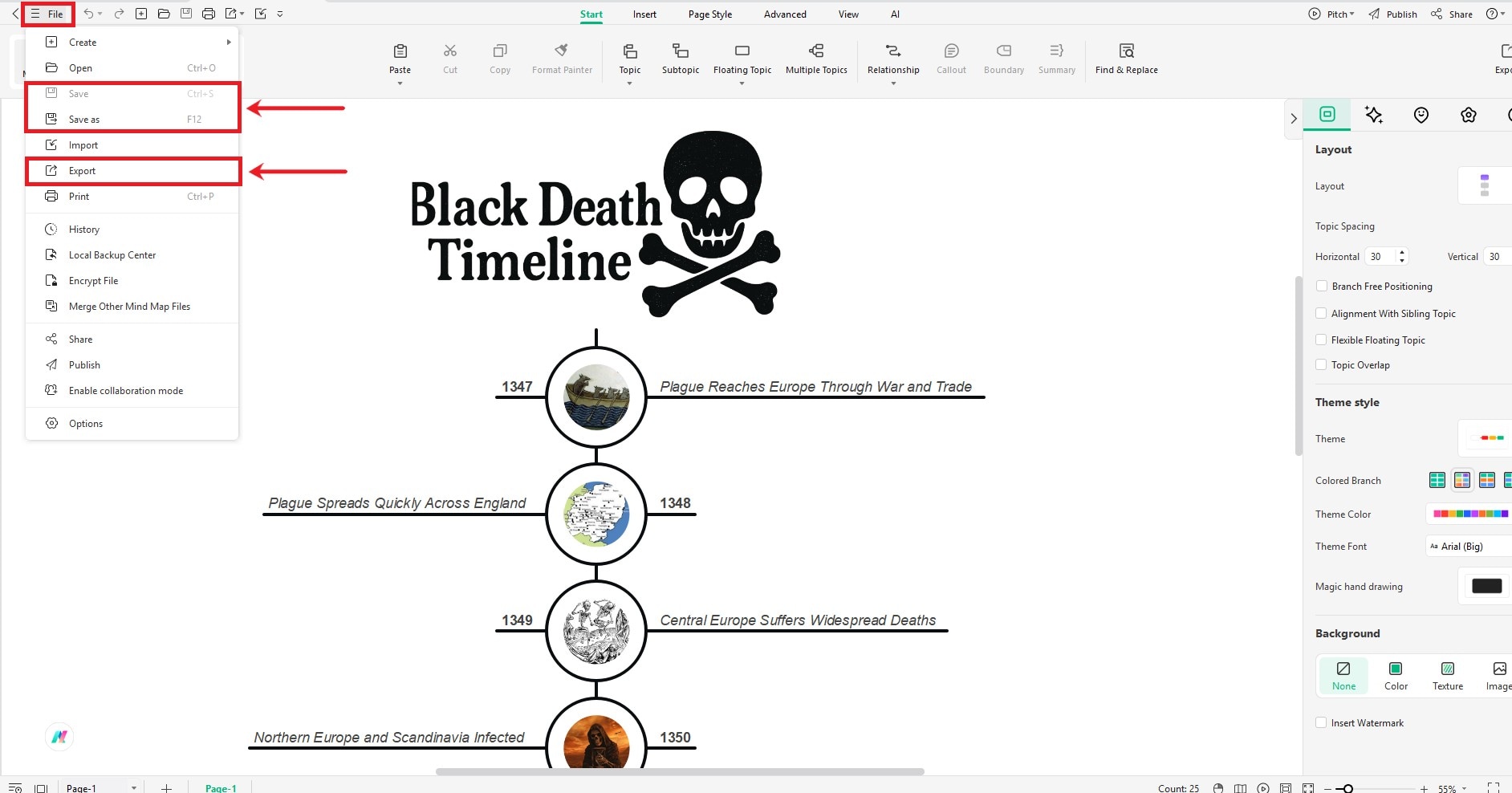
Final Words
From 1347 to 1400, the Black Death changed everything; how people lived, worked, and related to each other. Seeing the plague's progression year by year reveals just how deep and widespread its impact really was.
To break down big topics like this into visual steps, give EdrawMind a try. Whether you're a student, teacher, or history fan, it's a great way to create timelines and maps that make complex stories easier to follow.



